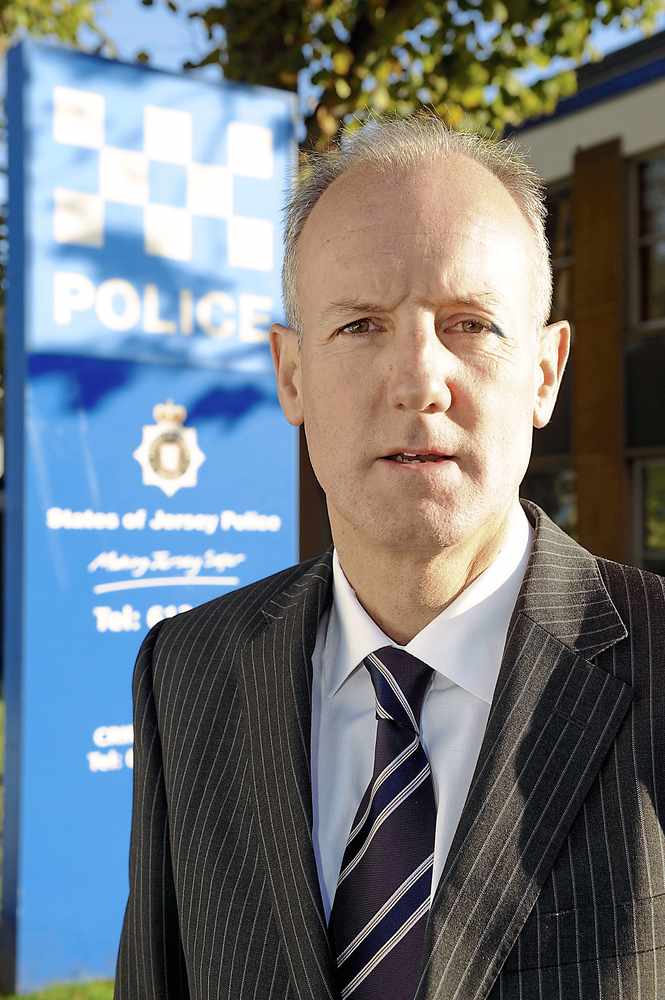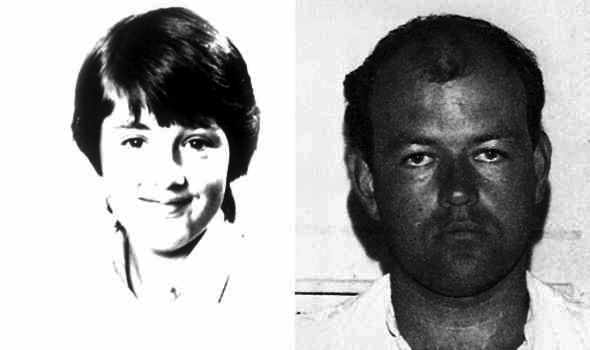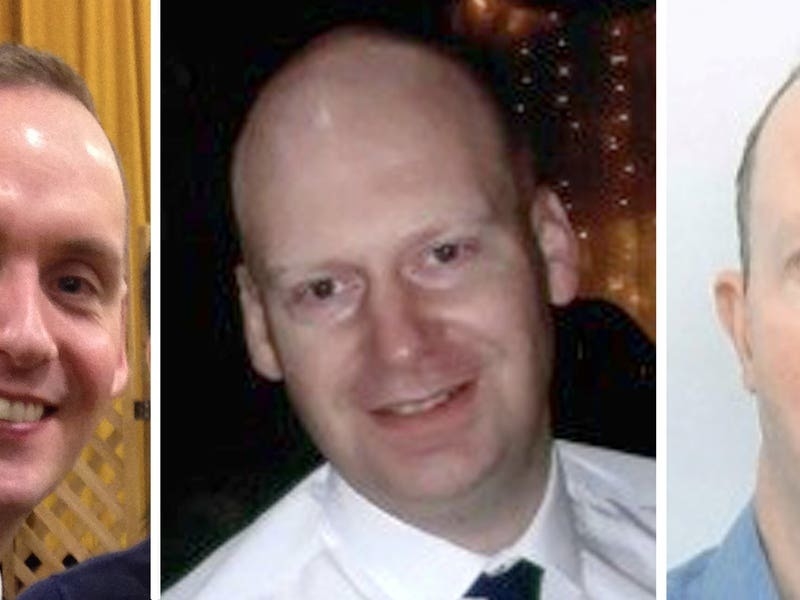Joao Pedro Pacheco Santos (46) was sentenced to seven years in prison for a violent and prolonged sexual attack against his 21-year-old victim just metres away from her home in 1998.
For 17 years Santos masqueraded as an innocent man after initial police investigations went cold.

But a previous conviction for assault on his partner in 2008 – 10 years after the original crime – eventually lead to a DNA breakthrough and allowed officers to pounce on the Madeiran national and arrest him in November last year.
Detective Superintendent Stewart Gull, who played an integral role in the lengthy and intricate cold-case investigation, said this sentencing should serve as a message to future offenders that no-one is safe from the grasp of the law.
‘It is a police cliché but we say that every contact leaves a trace,’ he said.
‘And with advances in forensic science and crime scene investigation we are often able to exploit those traces and opportunities. Offenders should be worried, they should be fearful. It does not matter how long but early one morning they might just get a rude awakening with police officers on the door.’

The Superior Number, which convenes only for the most serious cases, took over 90 minutes to make their decision and hand Santos a seven year sentence – one year more than the Crown had moved for.
The court heard how Santos, who appeared in the dock dressed in a blue shirt, tie and jeans flanked by an interpreter, followed and then attacked his vulnerable victim from behind as she made her way home from a night out with friends during the early hours of 1 February 1998.
The defendant then bundled the victim into a nearby field through a barbed wire fence just yards away from her flat in St Saviour before throttling and threatening to kill her with a knife if she did not stop screaming.
Santos, who told the victim he had been following her for two weeks as he pinned her to the floor by her neck, then subjected her to a prolonged sexual attack in which he tried to rape her and twice indecently assaulted her.

The victim, who said she felt she had been followed up St Saviour’s Hill, told police that she ‘feared for her life’ during the attack.
Crown Advocate Conrad Yates, who moved for a six year custodial sentence but not for deportation on the grounds that Santos had a young son who lived in the Island, told the court that the fact the defendant dragged the victim away from the road and into a field amounted to an act of abduction.
Santos pleaded guilty to two counts of indecent assault and one of attempted rape.
Advocate Michael Haines, defending, said his client should receive full credit for entering a guilty plea.
‘Nothing I say represents an excuse or justification for Mr Santos’ conduct,’ he said.
‘He accepts that his conduct was wrong and he does not recognise the person who acted like that in 1998. He wished to say that he hangs his head in shame.’
Issuing the court’s sentence Commissioner Julian Clyde-Smith said: ‘This is a very serious case in which the victim was subjected to a terrifying ordeal which has had a dramatic affect on her life.’
Jurats Robert Kerley, Paul Nicolle, Suzanne Marett-Crosby, Collette Crill, Anthony Olsen, and Geoffrey Grime were also sitting on the case.
‘NO matter how long it takes, offenders will be brought to justice.’
That is is the message from the States police after a man who tracked, attacked and raped a 21-year-old woman nearly two decades ago was finally brought to justice
Within 48 hours of police matching Santos’ DNA with that recovered from the crime scene in 1998, he was placed under arrest.
Detective Superintendent Stewart Gull, who was heavily involved in the Santos investigation, said that the case proved that the police would stop at nothing to ensure that justice prevailed – and he warned future offenders to be fearful of the force.
‘It is a police cliché, but we say that every contact leaves a trace,’ said the officer. ‘If you walk into a room, sit on a chair, sit at a table, open a door, move about, you leave a trace. And with advances in forensic science and crime scene investigation techniques, we are now able to exploit those traces.

‘Offenders should be worried, they should be fearful. It does not matter how long it takes, but early one morning they might just get a rude awakening with police officers at the door. ‘
For years, police forces around Britain have been carrying out so-called cold case reviews of serious crimes which have remained unsolved. The investigations make use of advances in DNA technology, enabling detectives to link attackers to crimes using technology that simply was not available when the offence occurred.
Det Supt Gull said there was an element of professional pride when they finally arrested Santos after 17 years. But he added that the force’s main satisfaction came on behalf of the victim. The detective said it was hugely satisfying to be able to finally bring to justice a man who has terrorised his victim’s life for a generation after the crime. He said that the woman, who has received support from specially trained sexual offences liaison officers, has been living a life plagued by the fear of one day bumping into her attacker.
‘It has been difficult for the victim,’ Det Supt Gull said. ‘Her life has moved on. She is now a mother and her first concern was the impact the arrest could have on her children. It was always hanging over her that some day she might bump into this man.
‘But despite her concerns, she has always been supportive in police investigations and she has been incredibly brave.’

Santos fled the Island for several months after the attack but returned, and is understood to have stayed here ever since. Asked why he thought Santos returned, considering he had the crime hanging over his head, Det Sup Gull said: ‘I guess with the passage of time he became more and more confident. He maybe thought, it’s been 17 years now. If they were going to catch me they would have done it by now.
‘It is a fantastic example of the advances in technology, and also the fact that the police will never give up, despite the passage of time and the challenges of complex cases.
‘Victims will hopefully take confidence from cases of this nature. They can appear to be hollow words – “This case will always remain open” – but this shows that we really mean it.’
The States force, which unlike many others around Britain does not have a dedicated cold-case review unit, currently has several investigations into unsolved crimes ongoing. The cases involve crimes such as rape and murder.
Det Supt Gull would not be drawn on the exact number of cold cases currently being reviewed by the force, but did say that investigations had produced promising signs.
‘Suffice to say we have a small number of cold case investigations ongoing at the moment and they are at various stages, but some are looking really quite encouraging,’ he said.
‘Some of those cases involve rape and some relate to murder. There are positive lines of inquiry that we are pursuing and I hope, in the fullness of time, we will bring further offenders to justice.’

The Leicestershire rapist and murderer
IN 1988 Colin Pitchfork became the first person to be successfully convicted of a crime as a result of DNA profiling.
In 1983 the small town of Narborough in Leicestershire was rocked by the rape and murder of 15-year-old schoolgirl Lynda Mann. Despite lengthy police inquiries and basic forensic work carried out at the crime scene, Miss Mann’s killer was not found.
Three years later another 15-year-old girl, Dawn Ashworth, was also raped and murdered near her home in Enderby, Leicestershire. The nature of the attack mirrored that of the incident involving Miss Mann, but police could not find a formal connection.
The prime suspect at the time was Richard Buckland, a 17-year-old with learning difficulties who confessed to the murder of Miss Ashworth under questioning but denied killing Miss Mann.
However, a recent breakthrough in DNA science pioneered by Dr Alec Jeffreys was used and established that it was the same person that murdered both girls – but it was not Mr Buckland.
The breakthrough came when police discovered that Pitchfork, who lived and worked in the Leicestershire area, had paid a colleague to give a DNA sample to police under his name after detectives asked 5,000 local men to give a voluntary samples.
He was arrested 19 September 1987 and in January 1988 he was sentenced to life in prison with a minimum of 28 years.

The Dearne Valley shoe rapist
AFTER evading capture for nearly 20 years, a father of two who was dubbed the Dearne Valley shoe rapist was brought to justice thanks to DNA evidence.
The then 49-year-old James Lloyd admitted raping four women and trying to rape two others during a spate of attacks in Rotherham and Barnsley, South Yorkshire, in the 1980s. During the series of assaults, the attacker became known as the shoe rapist because he took footwear off each of his victims.
The breakthrough came when his sister was arrested for drink-driving in the early 2000s. Her DNA was taken and it provided an extremely close match to that of the DNA recovered from some of the rape victims. The woman was asked if she had a brother, and LLoyd was subsequently arrested.
After his arrest, a trapdoor below his office was discovered and hundreds of stiletto shoes and items belonging to his victims were found.
Lloyd, who was well-known and well-liked and thought of as a pillar of his local community, was jailed for life by Sheffield Crown Court in 2006 andwas ordered to serve a minimum of 14 years and six months.






